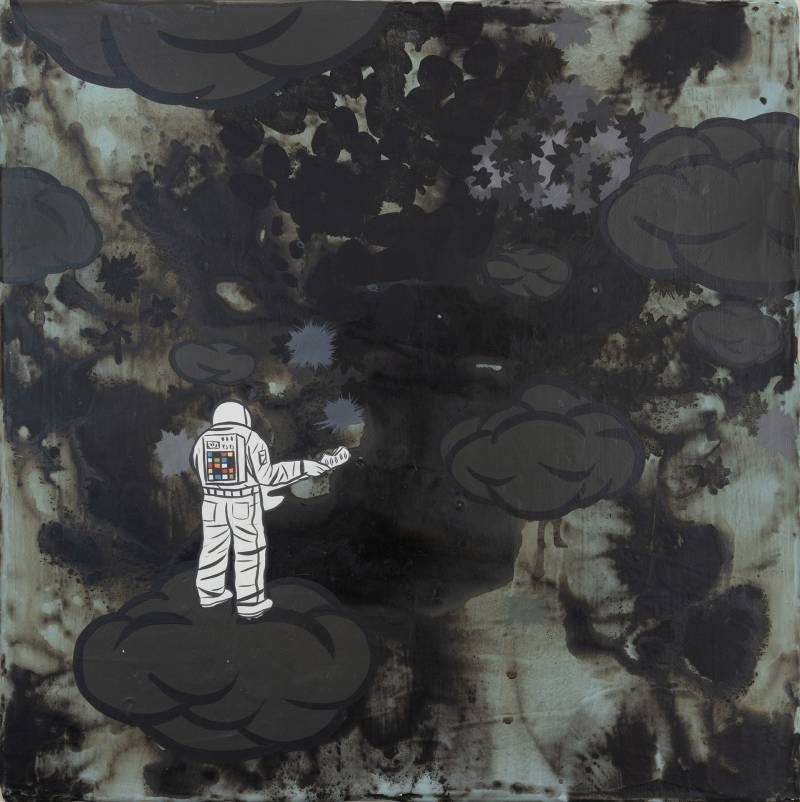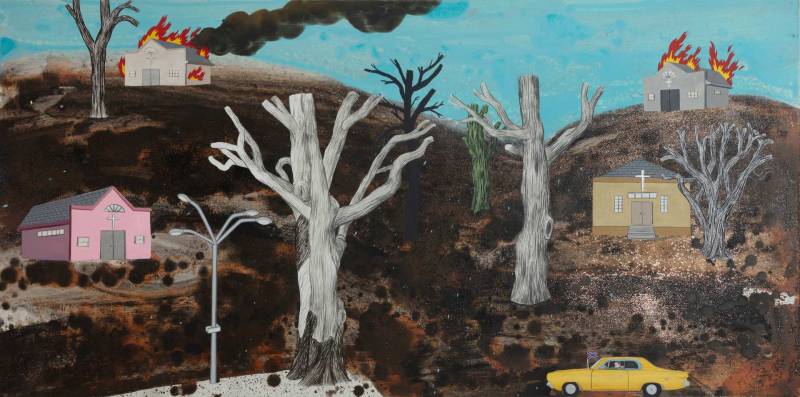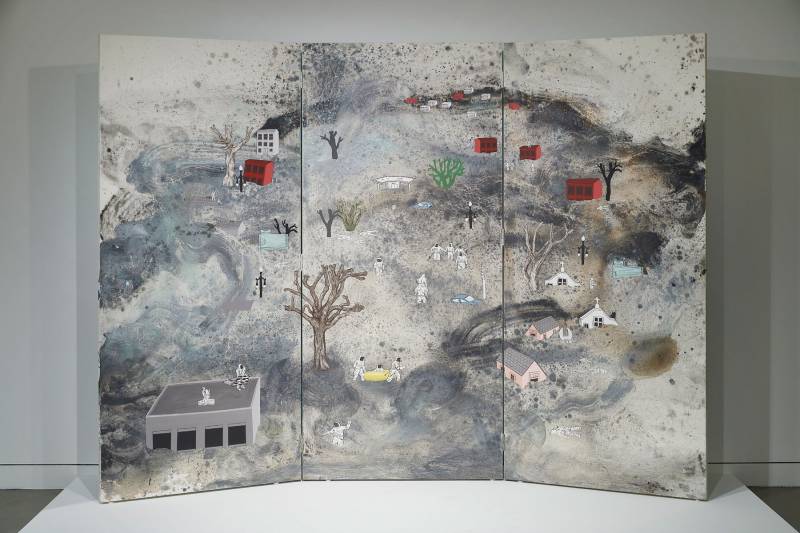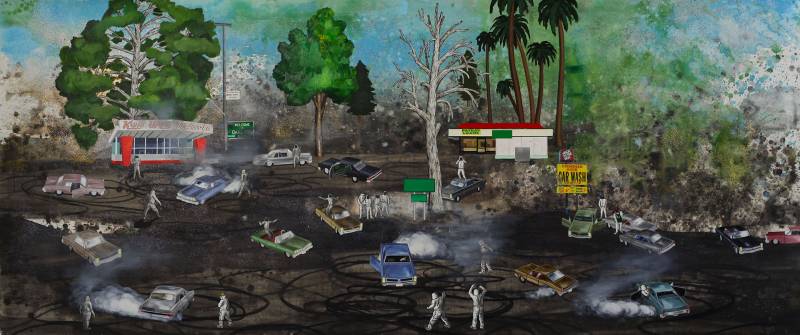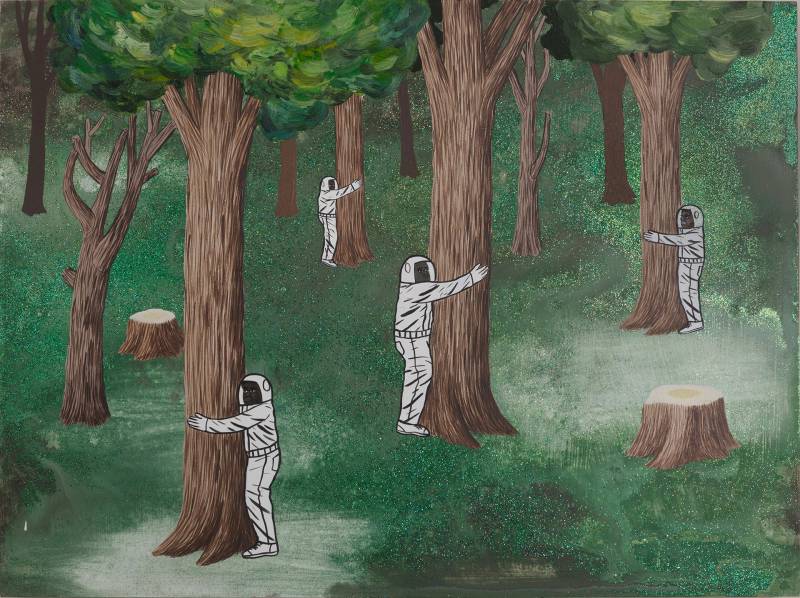
2008, is part of a large survey at San Francisco’s Museum of the African Diaspora, spanning three decades of the artists’ work. (Courtesy of the artist)
When we think of a far-off future where humans trek about the “final frontier” of space like an intergalactic highway, how do we envision those who travel the cosmos? Most science fiction paints them as nomads on the hunt for adventure and the spoils of mysterious new places.
But whose faces are inside those astronaut helmets?
David Huffman’s exhibit at San Francisco’s Museum of the African Diaspora, titled Terra Incognita, positions recurring images of Black people in spacesuits, whom he calls “Traumanauts,” at the center of this question. In the exhibit, which runs through Aug. 18, Huffman uses interstellar imagery to call attention to Black Americans’ search for identity in our all-too-real society grounded here on Earth—a society that has stripped them of their ancestral history and culture.
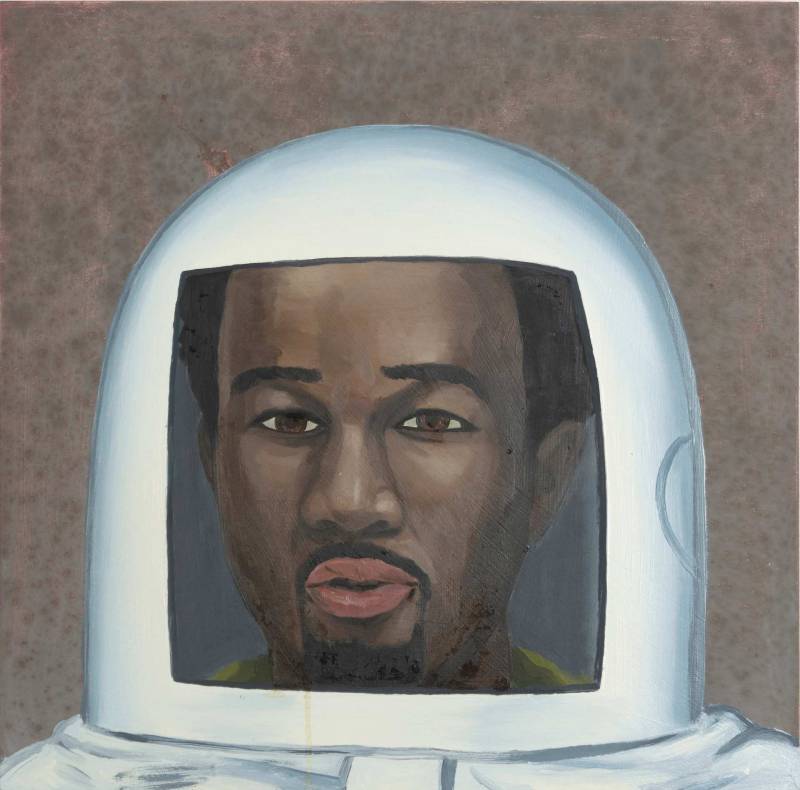
“The no therapy for Black folks after slavery, and just letting us figure out how to deal with it ourselves, becomes problematic in a sense of the continuity of health for a whole culture of folks,” the Berkeley-born visual artist tells KQED.
“In a way, we’re working out our own places of health,” Huffman adds. “So for me, these paintings cite these moments of trying to find health—like digging through some of the dirt, digging through some of the hard stuff—but also recognizing a sense of reflection.”
